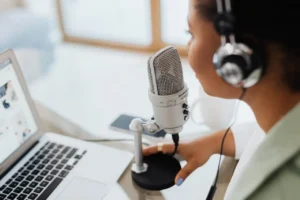
The U.S. Food and Drug Administration (FDA) has approved Dupixent® (dupilumab) for the treatment of pediatric patients aged 1 to 11 years, weighing at least 15 kg, with eosinophilic esophagitis (EoE). Dupixent is now the first and only medicine approved in the U.S. specifically indicated to treat these patients. This approval expands the initial FDA approval for EoE in May 2022 for patients aged 12 years and older, weighing at least 40 kg. The FDA evaluated Dupixent for this expanded indication under Priority Review, which is reserved for medicines that represent potentially significant improvements in efficacy or safety in treating serious conditions.
EoE is a chronic, progressive disease driven in part by type 2 inflammation that damages the esophagus and impairs its function. EoE can severely impact a child’s ability to eat, and they may experience heartburn, vomiting, abdominal discomfort, trouble swallowing, food refusal and failure to thrive. These symptoms can adversely impact their growth and development. Continuous treatment of EoE may be needed to reduce the risk of complications and disease progression. Approximately 21,000 children under the age of 12 in the U.S. are currently being treated for EoE with unapproved therapies. However, the actual prevalence of children with the disease is likely higher, given symptoms can be mistaken for other conditions and there are delays in diagnosis.
Naimish Patel, M.D.
Head of Global Development, Immunology and Inflammation at Sanofi
“Young children with eosinophilic esophagitis have significant unmet medical needs; despite existing treatment options, 40% of these children in the U.S. under the age of 12 continue to experience symptoms of this disease. Today’s approval underscores our commitment to bringing therapies to young patients with unmet needs and also brings hope to these patients who are at a critical age where struggling to eat and maintain weight directly impacts their overall nutritional intake and development.”
The FDA approval is based on data from the Phase 3 EoE KIDS trial with two parts (Part A and Part B) evaluating the efficacy and safety of Dupixent in children aged 1 to 11 years with EoE. At 16 weeks, 66% of children who received higher dose Dupixent at tiered dosing regimens based on weight (n=32) achieved histological disease remission (≤6 eosinophils/high power field), the primary endpoint, compared to 3% for placebo (n=29). Histological remission was sustained at week 52, with 17 of 32 (53%) children treated with Dupixent in Parts A and B. Histological remission was also achieved at week 52 in 8 of 15 (53%) children who switched to Dupixent from placebo in Part B. In addition, a greater decrease in the proportion of days with one or more signs of EoE based on Pediatric EoE Sign/Symptom Questionnaire-caregiver version (PESQ-C) was observed in children treated with Dupixent at 16 weeks compared to placebo.
George D. Yancopoulos, M.D., Ph.D.
Board co-chair, President and Chief Scientific Officer at Regeneron
“Young children are some of the most vulnerable patients with eosinophilic esophagitis, or EoE, as this debilitating and progressive disease threatens their basic ability to eat. Until today, these children had no approved treatment options specifically for EoE, leaving many with unapproved medicines that failed to target the root cause of their disease. With this approval, Dupixent becomes the first and only treatment option for EoE patients aged 1 year and older, weighing at least 15 kg. By targeting the underlying type 2 inflammation that contributes to this disease, Dupixent has the potential to transform the standard of care for these children as it has for adults and adolescents with EoE.”
The safety profile of Dupixent observed through 16 weeks in children aged 1 to 11 years weighing at least 15 kg was generally similar to the safety profile of Dupixent observed through 24 weeks in adult and pediatric patients aged 12 years and older with EoE. The most common adverse events (≥2%) more frequently observed with Dupixent than placebo were injection site reactions, upper respiratory tract infections, arthralgia (joint pain) and herpes viral infections. In EoE KIDS Part B, one case of helminth infection was reported in the Dupixent arm.
About the Dupixent Pediatric Eosinophilic Esophagitis Trial
The Phase 3 randomized, double-blind, placebo-controlled trial evaluated the efficacy and safety of Dupixent in children aged 1 to 11 years, weighing at least 15 kg, with EoE, as determined by histological, endoscopic and patient- or caregiver-reported measures. At baseline, 97% of these patients had at least one co-existing type 2 inflammatory disease, such as food allergy, allergic rhinitis, asthma and atopic dermatitis.
Part A, a 16-week, double-blind, placebo-controlled treatment period, enrolled 61 patients and evaluated the safety and efficacy of Dupixent in a tiered, weight-based dosing schema. The primary endpoint was histological disease remission, which was defined as peak esophageal intraepithelial eosinophil count of ≤6 eosinophils (eos)/high power field (hpf). Changes in caregiver-reported symptoms (proportion of days with 1 or more EoE signs [e.g., stomach pain, vomiting, food refusal]) were evaluated using PESQ-C.
Part B was a 36-week extended active treatment period (n=47) in which eligible children from Part A in the Dupixent group continued to receive their dose level and those in the placebo group in Part A switched to Dupixent.




